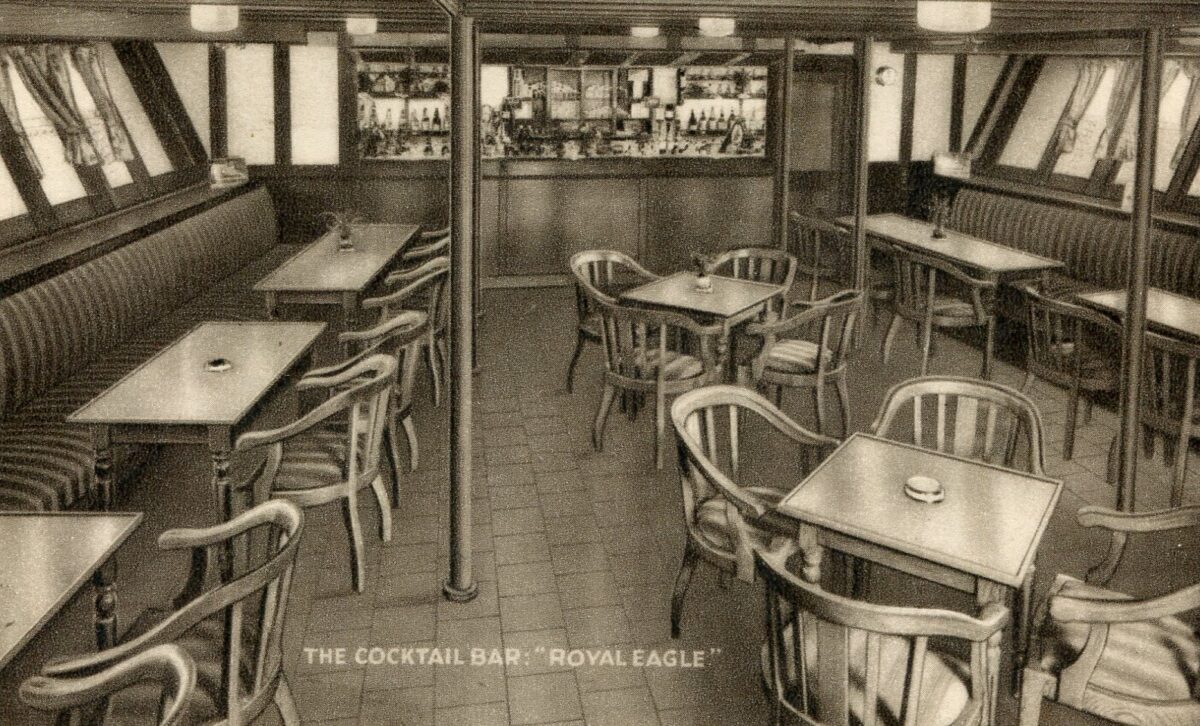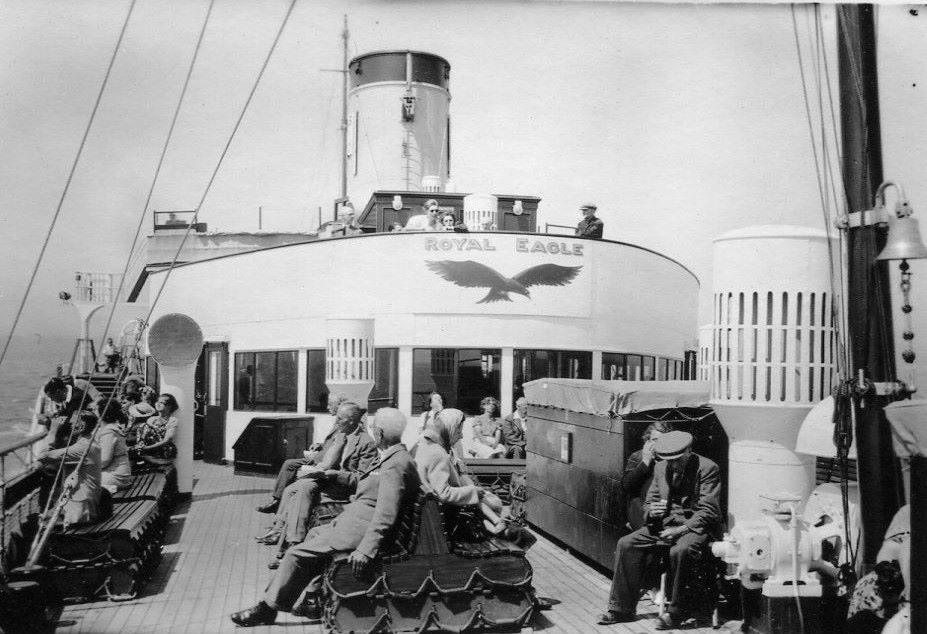
On Wednesday 19th June 1935 Royal Eagle was scheduled to sail from London Tower Pier at 9.20am down the Thames with calls at Greenwich, North Woolwich, Tilbury, Southend and Margate outward bound for Ramsgate due back at 8.45pm.

Built in 1932 by Cammell Laird in Birkenhead, Royal Eagle was the final development of the British paddle steamer designed exclusively for the excursion trade. At 1,538 Gross Registered Tons she was a big ship, roughly speaking twice the size of our Waverley in terms of tonnage. She was 292ft in length overall. And for an excursion paddle steamer she had a vast amount of under cover accommodation including extensive bars, dining and restaurant facilities.
She was targeted at an up market and moneyed clientele for her day trips from London to the coast. It would have cost you 11/- to travel on her from London to Ramsgate and back on a Sunday where you could have had a return trip from London to Margate and back on the cheap and cheerful Golden Eagle on a Monday, Tuesday, Wednesday or Thursday for just 4/-. The two ships were offering different things to different market segments with differing sized wallets.

Royal Eagle had plenty of bars to add to the passengers’ general sense of merriment.

She had extensive dining saloons.

She even had private dining saloons which could accommodate between 14 and 32 persons for private parties which could be booked by small groups for use all day if required.

She had extensive galley facilities with the galley range fired by oil which was unusual at that time and obviated the need for transporting dirty coal through the ship for the galley range.
To produce fine dining on a domestic passenger ship either you need to bring quality food aboard ready prepped from your own, or another’s, shore based catering facilities. Or if you are going to do it aboard the ship then you have to be able to source quality ingredients; have proper facilities to store them on board; have sufficient galley space to prepare and cook them; have sufficient and suitable accommodation aboard for the cooks and other catering staff; and have sufficient numbers of catering staff including cooks and their assistants with high end abilities, and the right mindset, to be able to do the work to a high standard and deliver the quality product.
Royal Eagle had a crew of 70 and the vast majority of them were working in the catering department. All this needs space on the ship and the right people doing the work and this costs money so it is no surprise that Royal Eagle was an expensive paddle steamer to sail on and not cheap if you wanted to dine aboard.
Royal Eagle had the most extensive dining facilities aboard any UK excursion paddle steamer of the time but even she, a ship purpose built for serving the inner needs of better off passengers, could accommodate only 342 diners seated in her dining saloons at any one time out of her total passenger capacity of more than 2,000.

In those far off days by no means everyone wanted to dine in style aboard anyway. Many, and perhaps most, even amongst the more moneyed clientele, would have brought picnics with them and tucked quite happily into their baskets or sandwich tins and opened their flasks on deck maybe going down to the bars from time to time to buy drinks or snacks whilst a minority of their number enjoyed the full on fine dining experience at tables in the dining saloons.
Today many, and perhaps most, people like to buy some sort of refreshment, snack or lunch when they are out and about on a day trip. If that had been the case in Royal Eagle’s day, and if everyone who sailed on her back then had wanted to have a sit down lunch or high tea in the dining saloons on days when she was full, despite being the doyen of onboard paddle steamer catering, 1,500 of them would have been disappointed and gone hungry.
Kingswear Castle returned to service in 2023 after the first part of a major rebuild which is designed to set her up for the next 25 years running on the River Dart. The Paddle Steamer Kingswear Castle Trust is now fund raising for the second phase of the rebuild. You can read more about the rebuilds and how you can help if you can here.
John Megoran
This article was first published on 19th June 2021.


